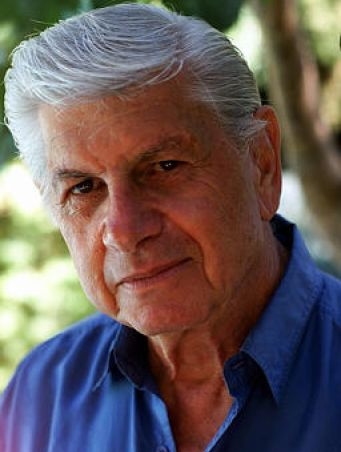
Classic Tracks - Page 2
“Stan was away on vacation,” Levine recalls. “Then, three weeks later, Phil came back to do ‘Zip-A-Dee-Doo-Dah’ [with Bob B. Soxx and the Blue Jeans, comprising Bobby Sheen and the aforementioned Blossoms]. ‘He’s A Rebel’ was not the ‘Wall of Sound’, but that next record was, and Phil picked Gold Star as the studio to achieve that after having worked in New York [at both Bell Sound and Mira Sound Studios]. He hated to fly, so he would have done anything to avoid flying, but he told me, ‘I heard the sound of the studio when we did “He’s A Rebel”, and I knew it would enable me to do what I want to do.’
“If any one recording projected me into what I became it was ‘Zip-A-Dee-Doo-Dah’, and Phil would have worked with Stan on that, but Stan didn’t want to work on the week-ends, so he made some excuse and Phil used me again. We were into that session maybe three hours or so, and I was following Phil’s instructions to raise this and bring that up, but then it got to a point where I knew I couldn’t record the track because all of my meters were pinning right at the top. If I’d have put that on tape it would have distorted. As a matter of fact, I found out later that there were other engineers along the way who tried to duplicate the ‘Wall of Sound’ by turning up all the faders to get full saturation, but all that achieved was distortion. In this case, I just had no room to work, and I knew what I had to do. I actually didn’t have the nerve to do it, but finally I thought, ‘To hell with it,’ and I turned all the faders off. First, Phil looked at me, and then he started screaming at me like I was crazy. He said, ‘How can you do that? You can’t do that! I just about had the sound I want!’ I said, ‘Well, I couldn’t record it, Phil.’
“At that point I started bringing in one microphone at a time and balancing it at a level that I could record. We had 12 inputs on the console that Bill Putnam had built over at United Western with help from Dave Gold, so I had 11 microphones turned on, and the only one that wasn’t belonged to Billy Strange’s lead guitar. Phil said, ‘That’s the sound, that’s the sound! Let’s record it!’ I said, ‘Well, I don’t have Billy Strange’s microphone turned on,’ and he said, ‘Don’t turn it on. That’s the sound I want to record.’ As it happens, you can hear Billy Strange’s guitar throughout, but it wasn’t miked. It just bled onto the other mics.
“Until then I hadn’t even heard the name of the song being mentioned, so when I went to slate it I asked Phil what the name was, and when he said ‘Zip-A-Dee-Doo-Dah’ I thought he was faking me out. Then, when I found out that it really was ‘Zip-A-Dee-Doo-Dah’, I nearly fell out of my chair. At any rate, we did it in one take.”
Thereafter, the modus operandi was largely always the same, with Spector rehearsing the assembled musicians for several hours before Levine rolled tape, and then the backing track being performed live and recorded monaurally via the aforementioned console and Ampex 350 three-track tape machine, monitored with Altec 603 speakers. (A bass drum overdub on “Da Doo Ron Ron” was the exception to the rule.)
“Phil’s routine almost never varied,” says Levine. “He would start off with the guitars – usually three or more – and have them play the figure that was written on the lead sheet. Jack Nitzsche built the lead sheets, and that was the thing – it all got built. I’m not sure that Phil had the sound in his mind as to the finished product. He would have the guitarists play eight bars over and over while the rest of us were listening, and then he might change the figure. Once he thought it sounded okay, he would bring in the pianos. Then, if all of that didn’t work together, he’d go back to the guitars, return to the pianos, and when everything fit he’d bring in the bass. He always brought in the instruments piecemeal in the same way, and the guy who worked the least on all of those sessions was the drummer Hal Blaine, because he didn’t come in and start playing until everything else was right. Then, when he did play, it was magic. He didn’t play his instrument, he was part of it. He totally owned those drums.”
During the early Sixties, Phil Spector’s “Wall of Sound” was so different to anything previously heard that it may well have prompted certain engineers to panic or protest. Larry Levine was totally receptive.
“It was the greatest thing that ever happened to me,” he says. “After we recorded ‘Zip-A-Dee’ in one take and then added the voices, I did my mix of the voices against the track and I know I started it off with the voices a little too low. Then I wanted to make another mix with the voices a little higher, but Phil said, ‘No, that’s good,’ and that was it. Everything was done in one mix, and the sound was so unique that, when Phil took a dub back to New York, people would come into the studio and I couldn’t contain myself. I’d say, ‘I’m gonna play a tape for you, and if you tell me there is a chance that this won’t be a Top Ten record, I’ll eat the tape.’ They’d look at me like I was crazy.
<< 1 - 2 - 3 - 4 - 5 - 6 - 7 >>
Webmaster: Jos Megroedt | Website: http://www.josmegroedt.com/ |
This site is hosted by: http://www.hostingphotography.com/

